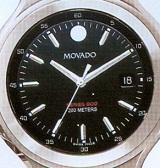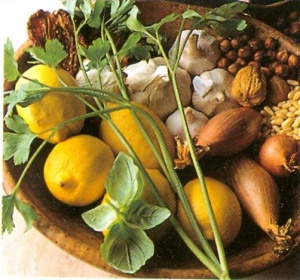| CLASSIC pasta | ingredients | |||
|
>>where to buy: a select list of web sites where you can find wonderful ingredients
E-mail to the editor
a new feature . . .
|
Here is a list of the major ingredients, including cheeses, that one should have at the ready. We will add links to places where one can purchase them, where applicable. risottos: arborio: the basic Italian rice, the mainstay of Lombardy. This is a larger grain rice than the other two. carnaroli: a fairly rare rice, generally felt to be the best of the three varieties. It was specially created as a cross between arborio and vialone nanna. vialone nano: the Venetian rice of choice. Smaller in size, it makes a more creamy risotto.
pastas (imported dried varieties) We like De Cecco, which is widely available and where available Garafalo. But we personally have the good fortune of being able to get a wonderful pasta made by Rustichella d'Abruzzo, which is truly exceptional. Cook's Magazine claims that any American pasta is just as good as De Cecco and other imported varieties. We don't buy into that. Here are the ones we generally pantry. See types of pasta for more detail. spaghetti: the classic strand bucatini: thicker strand, with a hole in the middle. trofie: two thin strands, rolled and twisted together to form a spiral. Ideal for pesto. orecchiette; ears fusilli: corkscrews (propellors) penne: small tubes conchiglie: shells farfalle: bow ties pappardelle: wide, flat noodles, usually freshly-made, but the dried version is good to have on hand.
in the pantry extra virgin olive oil: don't get anything but. These wonderful oils vary in taste by the different regions. Use the one that tastes best to you. The oil must taste fresh, light and lively. canned imported Italian tomatoes: we use only whole, peeled imported Italian plum tomatoes from San Marzano. tomato paste: imported, a tube, useful for special tomato flavoring. strattu: or estrattu (the same thing). a super concentrated tomato paste -- a legendary Sicilian sauce that can add major depths of flavor. Available on line. capers: small, packed in brine. red pepper flakes: or pieces of dried red pepper, cut up, after the seeds are removed. Flakes are easier. garlic: the sine qua non. We chop when called for, not using a garlic press. And we chop right before using. If there is a green shoot inside, we generally try to remove it. If the garlic starts getting too dry, toss it. Buy fresh. imported anchovies: the ones already filleted, ready for chopping, packed in oil. pancetta: the Italian version of bacon, with its own wonderful distinctiveness. prosciutto: the Italian version of ham. Don't cut off the fat. We don't try to "keep" it long: use quickly. luganega: the wonderful Italian pork sausage from the Milan and Monza areas. Salt, pepper and other spices are added. When you can find it: buy it and keep it in the refrigerator. balsamic vinegar: use only the classic product from Modena. Do not overuse in a dish such as a salad. pine nuts: the special nuts, not inexpensive, that are required for pesto. dried porcini: always have a package (which is generally how they come) at hand. Avoid any package with the porcini too dark and crumbling. flour: all-purpose, unbleached.
|
Cheeses: This list got so long we gave it a separate page.
herbs these are the ones we have either on the spice shelf, or, in our fortunate case, out of the herb garden pretty much year-round. basil: use only fresh basil. Its aroma and flavor are unmatched. We generally tear it in little pieces before using, rather than chopping it. parsley, Italian: the classic flat leaved variety that is used, it seems, from sunrise to sunset and beyond, in Italian cooking. rosemary: with its incredible aroma, it is best used carefully (like not too much), but it is the basis for flavor in so many dishes. oregano: se use fresh because we have it, cutting the small leaves just before using. But dried does work. bay leaves: from the bottle, whole dried bay leaves. mint: just what you think, generally fresh but dried chopped does work. marjoram: similar to oregano. nutmeg: a bottle for that "pinch" in many pasta recipes.
sage: for use in so many dishes. |
||
Home | Pasta | Risotto | Wine | Ingredients | Restaurants | Library | Editor's page | E-mail to the editor © 2006 classic pasta. All Rights Reserved. |

